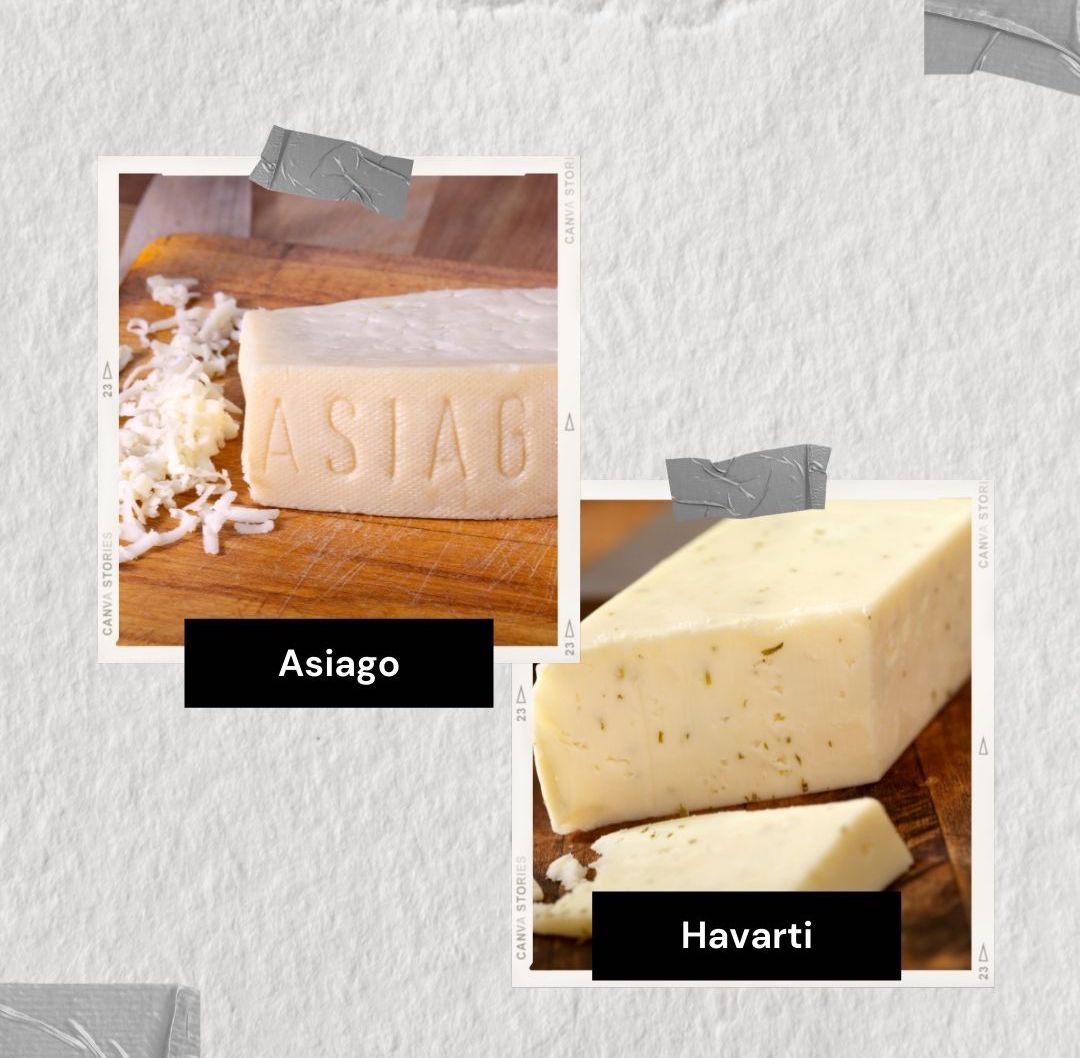Last Updated on November 5, 2022 by Aaron
Asiago and Havarti are both ubiquitous cheese, but they have some distinct differences. Let’s take a closer look at each type to see what sets them apart.
Asiago is a type of Italian cheese made from cow milk. It is semi-hard with a taste that’s mild, creamy, nutty with slightly sharp, which is reminiscent of parmesan. It has a mild nutty aroma.
Havarti (traditional) is a semi-soft Danish cheese that’s also made from cow milk. It is somewhat similar to asiago, but sweeter and more buttery, and has a funky smell. It tastes closer to gouda, Monterey Jack or Colby.
Table of Contents
Are they the same?
No, Asiago and Havarti are not the same cheese. Asiago is a swiss-style alpine cheese with a harder & grainier texture than Havarti, while Havarti is a smear-rind washed-curd cheese with a creamier texture. They both have irregular holes or eyes.
Asiago is also more pliable than havarti.
The modern “cream” Havarti or domestic Havarti nowadays are almost rindless without the reddish-brownish rind, the strong smell is also reduced, and looks almost like a stick of butter. Havarti is often mixed with herbs and spices.
Aging
Asiago and Havarti are both typically aged for about 2-6 months. The old variety of Asiago, Asiago d’Allevo, can be aged for up to 18 months for a sharper or slightly bitter flavor. While Havarti is best eaten within 3 months of production.
The aged Havarti (12 months old) may not catch everyone’s taste, but the flavor is much bolder with a more caramel-like taste. Also, the texture becomes firmer and crumbly. Not easy to find, but Castello has it via Amazon here.
Production
The production for Asiago and Havarti are quite different. Asiago is originally produced with whole, unpasteurized cow’s milk in the Asiago plateau, near the foothills of the alps. The way it is produced is quite similar to Swiss cheese, read Asiago vs Swiss cheese.
- The curd is coagulated, then stir to break and low-cooked. Later drained, salted, molded, hydraulically pressed, brined, and finally matured.
Havarti was first made in Hovedstaden and called “Danish Tilsiter”. The production process goes:
- The curd is coagulated, then stir to break. Later drained, washed, molded, brined, and finally matured.
In addition to the maturation process, the cheese is smeared with a mixture of potato starch, water, and bacteria culture at regular intervals. Some varieties are also waxed.
The Serve and Use
Asiago and Havarti are both versatile cheeses that can be used in a variety of ways.
Both cheeses can be shredded, cubed, or melted. Asiago is often used in dishes such as pasta, soup, risotto, and salad. Havarti is often used as table cheese to go with fruit, bread, and crackers. As well as in dishes such as quiche, pizza, and burgers.
They can also both be eaten on their own as a snack or part of a cheese plate.
Nutrition
Asiago and Havarti are both high in calcium and protein. I talked about the benefits of Asiago previously, Asiago contains about 17% fewer calories than Havarti castello and doubled calcium amount.
Reference

